Turtle An Ancient Animal: Turtles came into being about 200 million years ago and have evolved little since then. All turtles lay their eggs on land, even if the water is where they'd rather be. Ultimate Protection: The turtle's most distinctive characteristic is the large shell that protects the soft body. Shells come in different shapes and textures depending on the lifestyle of the turtle. Those living on land have hard, high-domed shells that are difficult to penetrate. Turtles living in water tend to have more streamlined, smoother shells for easier mobility through the currents.Famously Slow: Famously slow movers, most turtles will wait until their food inadvertently swims or walks within snapping distance. Most are herbivores and graze on grass, plants, bushes and shrubs, although they will also eat small animals or insects that happen to be mixed with their food. | 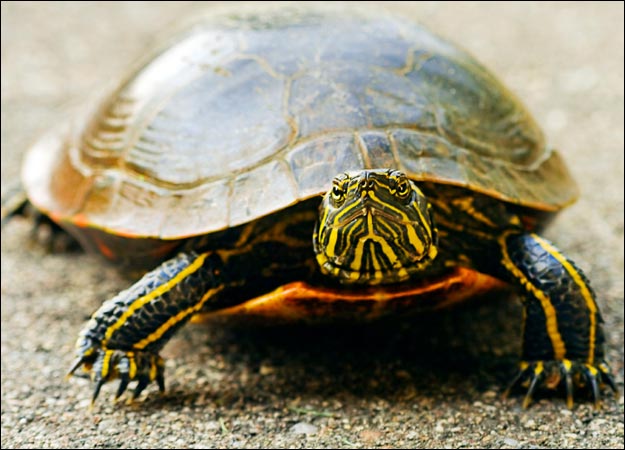 |
Komodo Dragon Varanus komodoensis The Komodo dragon is the world's heaviest lizard, weighing 150 pounds or more. It has gray scaly skin, a pointed snout, powerful limbs and a muscular tail. It lives in the scrub and woodland of a few Indonesian islands. They use their keen sense of smell to locate decaying animal remains from several miles away. They also hunt other lizards as well as large mammals and are sometimes cannibalistic. This species is threatened by hunting, loss of prey species and habitat loss. | 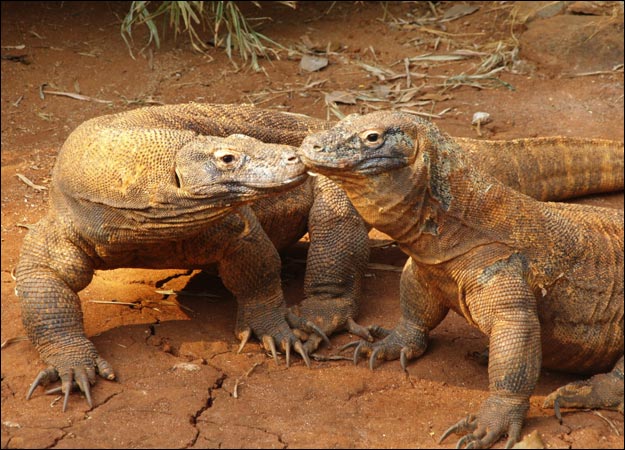 |
Alligator A Living Fossil: A throwback to the time of dinosaurs, the alligator and its relative the crocodile have changed little in the last 65 million years. The Chinese alligator of Eastern Asia and the American alligator of the southeastern United States are the only two species to have survived evolution Death from Below: Both species prefer freshwater lakes, marshes and swamps, where they are commonly seen floating in a partially submerged, death-like stasis at the water's surface in anticipation of a fresh meal. They eat a variety of small prey, such as fish, turtles, snakes and small rodents, which they snap up and devour whole. Larger prey, like fully grown wild boars or even antelope, are dragged below the water's surface and held in a viselike grip until they drown, then are devoured piece by piece.Mating and Rearing: Mating takes place underwater and males attract females by a roaring call. Twenty-five to 60 eggs can be laid by one female each season, which are placed in an enormous nest constructed of vegetation and mud. The mother will stay with the young for as long as three years.American Comeback: The most widely studied alligator is probably the American alligator. Once seriously endangered in the 1950s due to the fashionable coveting its skin, the American alligator has staged a comeback after being placed under legal protection.Croc or Gator?: Alligators may look indistinguishable from crocodiles at first glance, but there are several differences. For instance, alligators have broad, U-shaped snouts whereas crocodiles have narrower, V-shaped snouts. | 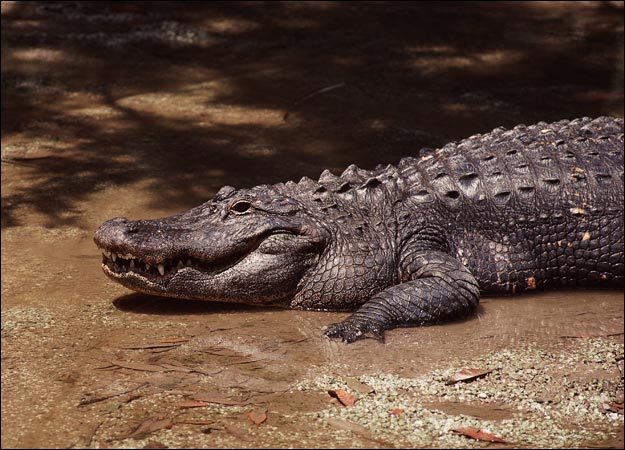 |
Crocodile A Vicious Maneater: The saltwater crocodile is the largest reptile in the world, and perhaps the most dangerous. Along with alligators, saltwater crocodiles are responsible for more human fatalities per year than any other predator on earth. Made for Water: They are powerful swimmers, expertly adapted to life in the water, where they do almost all of their hunting. Their eyes and nostrils are located on top of their head, which allows them to see and hear prey while partially submerged.Stalk and Ambush: Saltwater crocodiles prefer to take prey from the water's edge. These patient predators will float for hours on end, eyes focused on the bank, waiting for a thirsty animal to approach for a drink. When a victim is spotted, the crocodile drops below the surface, inches forward to within striking range, then launches out of the water with a violent, bone-crushing attack. Hapless animals that don't get out of the way are dragged beneath the water's surface and drowned.Underwater Storage: After twisting off a few mouthfuls of flesh, the crocodile will secure the carcass underwater beneath a log or riverbank, allowing it to rot over the course of several days, during which the reptile feeds on its prize at leisure. | 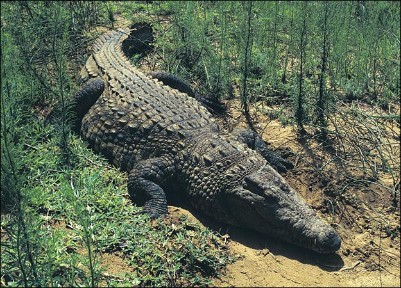 |
Snake A Basic Body Plan: Snakes are found in almost all corners of the world except Antarctica. Snakes come in many shapes, sizes and colors, and their appearance reflects the environment in which they live. Without legs, eyelids and external ears, they have still evolved into formidable hunters. Detecting Prey: Smell seems to be a snake's best asset. The snake analyzes scents by flicking its long tongue into the air to gather scent molecules, which are then transferred to the Jacobson's organ located inside its mouth. Some species, such as pit vipers, take advantage of organs on their face known as head pits to detect changes in temperature — another method that allows the snake to find its prey.Killing Prey: Killing prey can take many forms. Some snakes use constriction. By wrapping its muscular body around its victim the snake can slowly suffocate and crush its prey. Snakes have extremely flexible jaws and can swallow prey that is much larger than their head. The digestive juices slowly kill the victim. Only about one in 10 snakes are venomous and within that group only a small proportion is a threat to humans.Awesome Eyesight?: Most snakes have adequate eyesight, allowing them to track movements. The exception are arboreal (tree-dwelling) snakes, which have binocular vision. These snakes can focus both eyes on the same point in order to make a precise attack. | 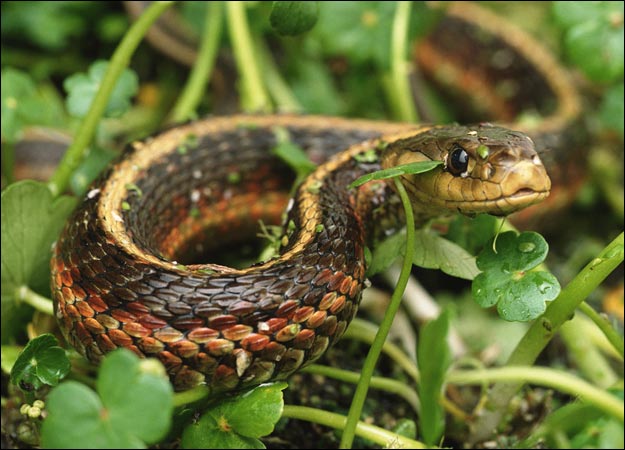 |